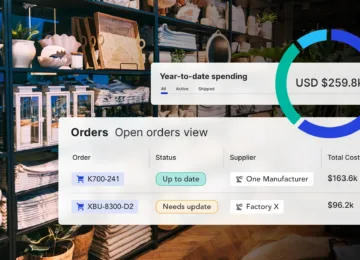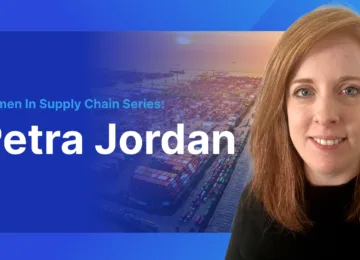You may have heard the news, first reported Wednesday by Axios, that job listings appear to indicate that TikTok is building fulfillment centers to double-down on their ecommerce strategy. While they’ve been in the ecomm game for awhile, through their pilot partnership with Spotify, this news suggests that they’re expecting to go toe-to-toe with Amazon directly. It’s an interesting move, and I don’t want to speculate about whether or not it will work, but I do want to spend some time laying out the many questions this news raises.
First, a quick definition for those who may be new to the space: what are fulfillment centers, exactly? Fulfillment centers are third-party warehouse partners for brands that hold, package, and ship orders as customers place them through the brand’s point-of-sale. Some, including Amazon’s, have their own logistics arms to manage the shipping process (or part of it), but many simply store, handle, prepare, and send out orders placed through the brands that use them.
So what does TikTok’s foray into fulfillment make me wonder?
1. Why is now the right time to build fulfillment centers?
The number one question I have is, simply, why now? TikTok will spend a huge amount of money to build fulfillment centers from the ground up, as evidenced by the fact that they’re hiring strategy and vision people first—they don’t have anything built in this space at all yet, so whatever they’re seeing from the market must be a very strong signal for them to commit this much capital to the product.
2. Why doesn’t TikTok use existing fulfillment centers?
Continuing the question of “why do this at all,” I’m curious why they wouldn’t dip a toe into the space of offering fulfillment services through a partner to start. The space is very crowded at the moment, and even from just a real estate and strategy standpoint, fulfillment companies that exist today are already well-established to create efficiencies in the order fulfillment process by having warehouses, personnel, and logistics partners lined up in the key markets. That’s to say nothing of the data and operational expertise they’ve acquired from actually operating in those markets.
Competing with the established fulfillment centers is one thing, especially Amazon’s behemoth operations. The more interesting part is, why doesn’t TikTok want to piggy-back off those partners’ locations and operational advantages to learn as they grow, while limiting risk? Someone at TikTok must have a cost/benefit spreadsheet about the profit margins they expect from betting big, and I’d very much like to take a look at it.
3. What does this mean for the Shopify partnership? Does TikTok want to build a point-of-sale solution?
Another big wrinkle here is that TikTok’s foray into ecomm, as we know, has been facilitated by a partnership with Shopify. Shopify offers the point-of-sale solution that TikTok’s influencers and brands use to collect orders from their viewers. But here’s the thing: Shopify is also building fulfillment centers—and moving forward, it seems like they’re hoping to move more and more of their point-of-sale customers into their operations facilities as an expansion revenue stream.
So where does that leave the TikTok/Shopify partnership? If TikTok doesn’t want to use Shopify’s fulfillment centers, that puts them at odds with what appears to be Shopify’s current corporate strategy. Does that mean… TikTok is building their own Shopify competitor as well? Or will they find a new partner? Or is TikTok presenting a compelling enough vision to Shopify that Shopify is willing to let them enter the same space they’re getting into as a direct competitor for people who are already using Shopify to manage sales?
4. What are people on TikTok selling? Their own stuff, or TikTok’s?
Influencers on TikTok who sell today, through the existing Shopify pilot, generally speaking are working on behalf of brands or selling their own products directly. Shopify doesn’t have house brands the way Amazon does, and they’re not in the business of manufacturing or selling their own products to customers. The inventory is someone else’s, and neither TikTok nor Shopify has to worry about that side of the business at all.
But in this new world, if TikTok is getting into warehousing and fulfillment, does that indicate that they’re trying to mobilize existing TikTokkers to sell products on TikTok’s behalf? To be clear, I haven’t seen anything to suggest that this is the play, but it is a striking possibility raised by the fact that they’re betting big on the operations side of ecomm.
Then there’s the third option: influencers on TikTok are selling on behalf of brands that aren’t on TikTok. But that raises another question: if brands are hiring ambassadors to promote their product on TikTok, what’s the incentive for the brands to have TikTok fulfill the orders? They can route the product to their checkout experience through a link or a promotion code and complete the transaction natively.
5. Who’s responsible for forecasting, storage costs, etc.?
If the play is to open TikTok up as a place for influencers to get into ecomm for the first time, the biggest question that opens up is: what happens if TikTok influencers don’t know how to do ecomm? Specifically, I’m thinking about the inventory storage costs—if all that stuff is now going to sit in a TikTok warehouse until it gets packaged up and shipped out, someone is going to be paying to keep it there. Is that going to be TikTok? Or the influencers?
With Fulfillment by Amazon, the brands are ultimately responsible for their own costs here. Amazon can offer the service at a competitive price, and of course can create some efficiencies and incentives for brands to use the service, but fundamentally, the brands are still figuring out how much product they can sell through Amazon and anticipate costs. Whether TikTok is hoping to entice new sellers to get into ecomm with this play or simply motivate influencers to sell TikTok’s stuff, that math still has to happen somewhere, and I’m very curious to see who ends up on the hook for doing it.
Ultimately, I think it’s a totally fascinating move on TikTok’s part. I’m also very interested in how they’ll handle the logistics side—so far I haven’t seen anything to indicate that they’re building out a transportation arm, although I’m sure it’s possibly on the roadmap. But this feels like a very, very big step into a very, very crowded space, and I’m going to be paying a lot of attention to how these questions all shake out.
by Dan Magida, Senior Global Operations Manager at Anvyl
For more discussion of this topic, check out the most recent episode of Safety Stock, featuring Will and Dan.



